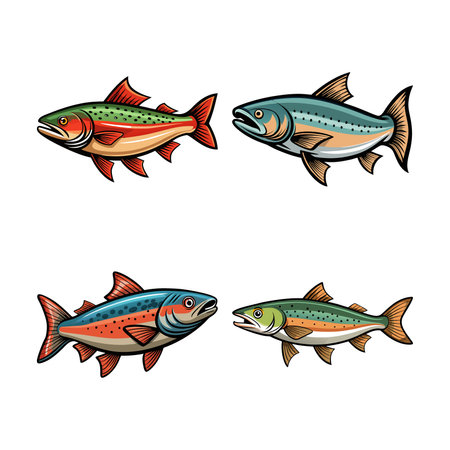1. Essential Fishing Pliers
When it comes to freshwater fishing, a solid pair of fishing pliers is one of the most important tools you can carry in your tackle box. Whether youre out at the lake, river, or your favorite local pond, these versatile tools come in handy more often than youd think.
High-quality fishing pliers help you remove hooks quickly and safely—especially when dealing with feisty fish or deeply embedded hooks. Theyre also great for cutting fishing lines (including braided line), crimping split shots, or making small gear adjustments on the fly.
Why You Need Rust-Resistant Pliers
Freshwater environments may not be as corrosive as saltwater, but moisture is still a constant factor when fishing. Rust-resistant pliers made from materials like stainless steel or aluminum will stand up to the elements and last much longer than standard models.
Common Uses for Fishing Pliers
| Function | Description |
|---|---|
| Hook Removal | Easily extract hooks from fish without injury to you or the fish. |
| Line Cutting | Cut monofilament, fluorocarbon, or braided lines cleanly and quickly. |
| Split Ring Opening | Open split rings to change lures or hooks effortlessly. |
| Crimping | Secure weights or sleeves onto your line with built-in crimpers. |
Pro Tip:
Look for pliers with non-slip handles and a built-in line cutter. A lanyard or sheath is also a plus—you don’t want them slipping into the water!
2. Versatile Assortment of Hooks and Weights
When it comes to freshwater fishing, having a solid variety of hooks and sinkers in your tackle box can make all the difference. Different species, water conditions, and bait types all call for different setups. The right hook size ensures a proper hookset, while the right weight helps your bait reach the strike zone and stay there.
Why Variety Matters
Freshwater fish come in all shapes and sizes—from panfish like bluegill to larger predators like bass or catfish. If you’re only carrying one type of hook or sinker, you’re likely to miss out on opportunities. A wide assortment allows you to match your gear to the fish youre targeting and the conditions youre fishing in—whether thats deep water, strong current, or shallow structure.
Common Hook Types
Here’s a quick breakdown of popular hook styles and what they’re best used for:
| Hook Type | Best For |
|---|---|
| Bait Hooks | Live bait like worms or minnows |
| Circle Hooks | Catch-and-release fishing; reduces gut-hooking |
| Trebles | Lures like crankbaits or topwaters |
| Worm Hooks (Offset) | Soft plastic worms; great for bass fishing |
Sinker Types and Uses
Sinkers (or weights) help control how fast your bait sinks and how well it stays in place. Using the wrong weight can spook fish or cause your line to drift too much. Heres a look at common types:
| Sinker Type | Ideal Use |
|---|---|
| Split Shot | Quick adjustments; light tackle setups |
| Egg Sinkers | Slip rigs for bottom fishing in rivers/lakes |
| Bullet Weights | Texas rigging soft plastics for bass |
| Pyramid Sinkers | Strong currents; anchor bait in place |
Pro Tip:
A small plastic organizer with labeled compartments is a great way to keep different hook sizes and weights easily accessible. This saves time on the water and helps you quickly adjust to changing conditions or target species.
The more versatile your tackle box is when it comes to hooks and sinkers, the more adaptable youll be—and that often leads to more bites and better fishing days.
![]()
3. Reliable Line Cutter or Braid Scissors
When youre out on the water, time and precision matter. Thats why having a reliable line cutter or braid scissors in your tackle box is a must-have for any freshwater angler. Whether youre trimming tag ends after tying a knot or swapping out lures quickly, using a sharp, dedicated tool makes all the difference.
Why You Need a Quality Line Cutter
Fishing lines—especially braided lines—are tough by design. Regular scissors or pocket knives often struggle to cut them cleanly, which can lead to frayed ends, wasted time, and even unsafe situations. A high-quality line cutter ensures you can make quick, clean cuts every time without fumbling around or risking injury.
Key Benefits of Using Dedicated Cutters
| Feature | Benefit |
|---|---|
| Sharp Blades | Makes clean cuts through mono, fluoro, and braid with ease |
| Compact Design | Easy to store in your tackle box or clip onto your vest |
| Corrosion Resistance | Holds up well in wet and humid fishing environments |
| Safety Features | Reduces risk of injury compared to using general-purpose tools |
Braid vs Mono: Cutting Comparison
Braided line is known for its strength and durability, but its also notoriously difficult to cut without the right tool. Mono and fluoro lines are easier to handle but still benefit from precise cuts when tying knots or re-rigging. Heres how they compare:
| Line Type | Ease of Cutting with Standard Scissors | Ease of Cutting with Braid Scissors |
|---|---|---|
| Braided Line | Difficult – often frays | Easy – clean cut every time |
| Monofilament Line | Moderate – may slip or bend | Easy – no slippage |
| Fluorocarbon Line | Moderate – thick and stiff | Smooth – minimal resistance |
If you’ve ever tried cutting braid with dull scissors or your teeth (not recommended!), you already know the struggle. Investing in a pair of braid-specific scissors or a quality line cutter will save you frustration and help keep your setup clean and efficient.
4. Compact First Aid Kit
When youre out on the water, safety should always be a top priority—right alongside catching fish. A compact first aid kit is one of those items you hope you never need, but youll be glad its there if you do. Whether youre dealing with a hook puncture, minor cuts from sharp tackle, or even insect bites, having basic medical supplies in your tackle box is essential.
Why It Matters
Fishing often involves sharp hooks, knives, and other gear that can easily lead to minor injuries. Even something as simple as handling a fish with sharp fins can leave you with a small wound. Without quick treatment, these little mishaps can turn into bigger problems—especially when youre far from help.
What to Include in Your First Aid Kit
Your kit doesnt need to be fancy or bulky; just make sure it has the basics. Heres a quick breakdown:
| Item | Purpose |
|---|---|
| Adhesive Bandages (various sizes) | Cover small cuts and blisters |
| Antiseptic Wipes | Clean wounds to prevent infection |
| Tweezers | Remove splinters or embedded hooks |
| Medical Tape & Gauze Pads | Dress larger wounds |
| Small Scissors | Cut tape, gauze, or clothing if needed |
| Latex or Nitrile Gloves | Keep things sterile while treating injuries |
| Pain Relievers (like ibuprofen) | Manage pain or swelling from minor injuries |
Pro Tip:
Choose a waterproof case for your first aid kit so it stays dry and ready to use. You can also label it clearly and store it in an easy-to-reach spot in your tackle box.
Quick Safety Reminder:
If youre fishing with kids or beginners, a first aid kit becomes even more important. Accidents happen fast—be prepared so you can get back to enjoying your day on the water.
5. Waterproof Tackle Organizer
If youve ever had to deal with soggy soft plastics, rusty hooks, or a tangled mess of fishing gear, then you know the value of a good waterproof tackle organizer. This tool is a game-changer for keeping your gear sorted, dry, and ready to go at a moments notice—whether youre out on a lake in Minnesota or casting from the bank in Georgia.
Why You Need One
A waterproof tackle box doesnt just protect your investment—it saves time on the water. With multiple compartments, you can separate your lures by type, organize your terminal tackle by size, and keep spare lines tangle-free. Plus, the waterproof seal helps prevent water from seeping in during rainy days or accidental splashes.
Main Benefits
| Feature | Benefit |
|---|---|
| Waterproof Seal | Keeps contents dry even in wet conditions |
| Adjustable Compartments | Customize storage for lures, hooks, and weights |
| Durable Construction | Stands up to rough handling and outdoor elements |
| Clear Lid Design | Easily view contents without opening every box |
Tackle Box vs. Basic Storage Box
If youre still using an old plastic container or ziplock bags to hold your gear, it might be time for an upgrade. Heres how a waterproof tackle organizer compares:
| Basic Storage Box | Waterproof Tackle Organizer | |
|---|---|---|
| Water Protection | No | Yes |
| Pocket Organization | Poor | Excellent with customizable dividers |
| Lifespan of Gear Inside | Shorter (prone to rust) | Longer (protected from moisture) |
A Real Time Saver on the Water
The last thing you want when the fish are biting is to waste time digging through a messy pile of tackle. With a well-organized box, everything has its place—and that means more casts and more chances to land your next big catch. Whether youre targeting bass in Texas or trout in Colorado, a waterproof tackle organizer should always have a spot in your gear bag.


